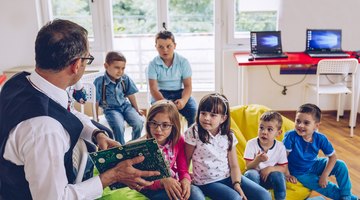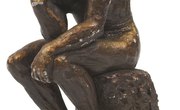Many students cringe when hearing or reading the term "ice breaker," recalling uncomfortable or awkward exercises in previous courses or situations. As its name suggests, an ice breaker is an activity or event that helps to "break the ice" and get participants mingling, relaxing and feeling comfortable together. A well-chosen ice breaking activity first determines what specific "ice" needs breaking. Students who are like-minded and of the same age and ability need to get acquainted with classmates and the teacher or facilitator. Of equal importance is participants from different cultures and backgrounds need to discover what they share. People learn in different ways, and thoughtfully chosen ice breakers help a facilitator to correctly assess their diverse learning styles.
Games as Ice Breakers
Some individuals learn best by hearing while others learn by seeing or writing notes. Some people like to reflect thoughtfully and quietly, and by contrast, others are drawn to and learn by doing or by talking. Others learn best though music, movement or drama. Games offer a fun way to engage these different styles of learning. For example, the paper airplane exercise begins with giving each participant three sheets of paper; a piece of origami or some other paper creation can be substituted. A first attempt involves verbal directions that are read aloud. A second attempt involves both visual and written directions. Third, the instructor demonstrates the process. Discussion follows about auditory, visual and kinesthetic learning styles.
Discussion-Based Activities
Participants or students can also be divided into groups and given discussion questions that help to determine learning styles. These include, for example, "You are in an economics course that makes it difficult to stay awake during lectures," and, "You are in a business class in which a group project of designing a small business is 50 percent of your grade. Have your presentation appeal to all learning styles." Participants can also be prompted to take a learning style quiz that determines their preferences. They can then be divided into four groups, including auditory, visual, kinesthetic and combined learning types. Each group discusses learning techniques for their particular style and shares preferences with the class.
Bodily Demonstrations and a Fiery Theater Scenario
A facilitator can also identify different learning styles through a demonstration that begins by holding out the right arm and making a 90 degree angle with it, touching the thumb and forefinger. She then puts her fingers on her cheeks. The results are often amusing. The visual learners do what the instructor has done. The auditory learners in the group do what they have heard. Others are confused. Another revealing activity involves asking students to consider what they'd do in a theater if they smelled smoke. Would they most likely yell, run or begin to look around? Students are asked to consider which learning styles are presented by these three reactions.
Virtual Ice Breakers for Online Instruction
Online classes and meetings can also benefit from ice breakers when they are well-chosen and kept brief. A relevant approach to assessing the learning styles of participants involves asking, "What skills can you contribute to the team that aren't obvious to us right now?" An interesting variation on this would involve asking students to guess or determine their own learning styles after a brief video clip or PowerPoint presentation on the topic. Students are prompted to provide one specific example that supports their learning style self-assessment. These well-designed ice breakers provide excellent opportunities to accurately assess learning styles.
Related Articles
References
Writer Bio
Susie Zappia teaches humanities and research and writing courses online for several colleges. Her research interests include counterculture literature of the 1960 and instructional design for online courses and she enjoys writing about literature, art and instructional design. She holds a Master of Arts in humanities from California State University, Dominguez Hills and a Master of Science in instructional design from Capella University.










